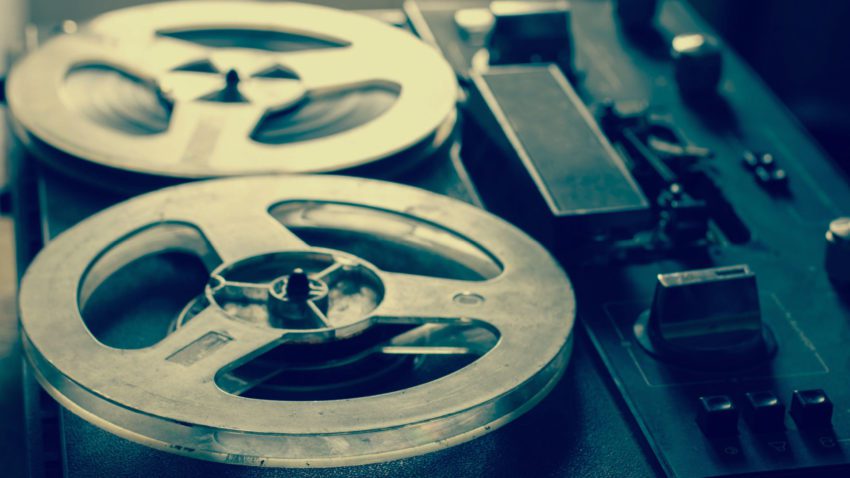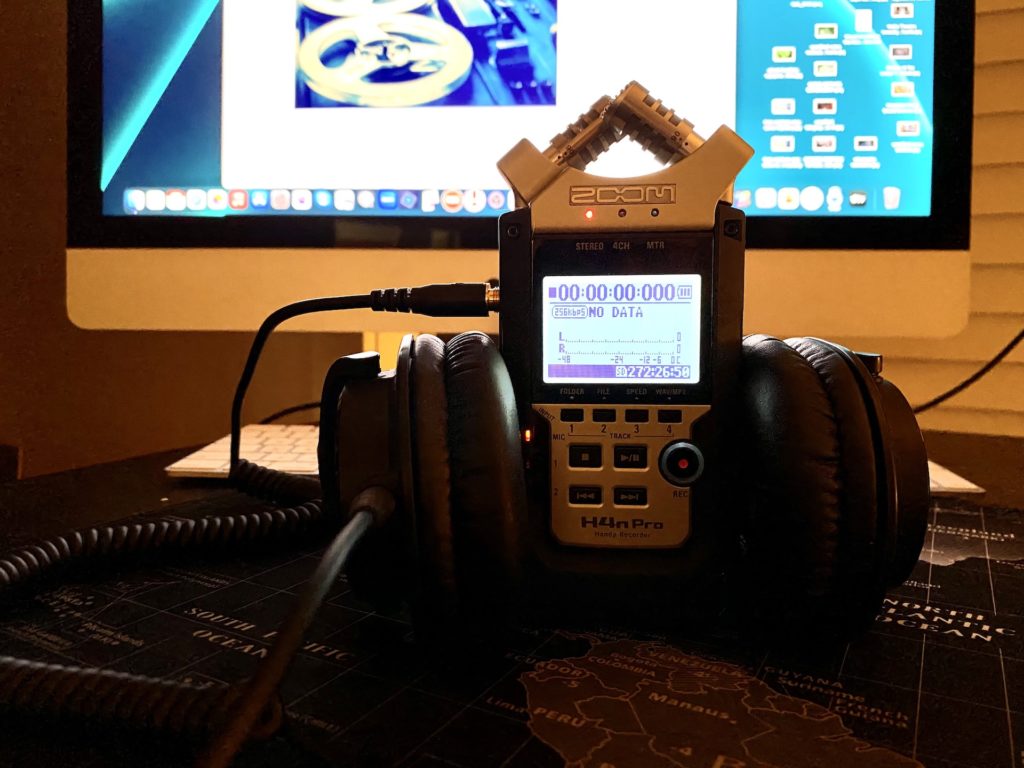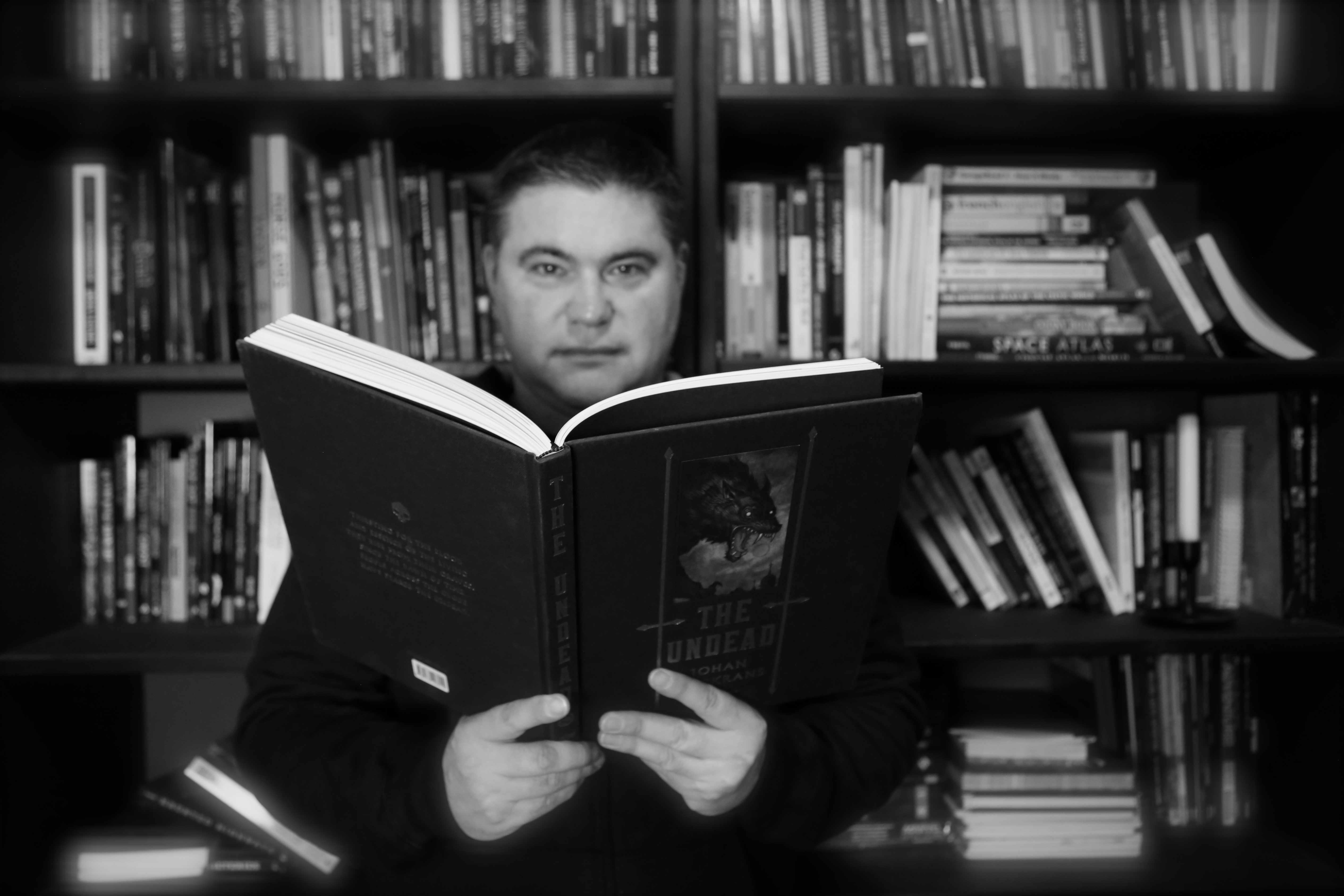
How To Capture EVPs And Solve The Mystery
Cozy ghost hunters rely on electronic voice phenomena (EVP) to get the best clues from ghosts. Learn how to set up the experiment, interview a ghost, and collect clues. Get more info after the jump!
Setting Up Your EVP Clue Collecting Experiment
Audio is the best at capturing phantom clues and ghostly evidence. You’ll listen for ghost voices (electronic voice phenomena or EVP), which sound like whispers. Since they’re so quiet, you need a great audio recorder to capture them. An EVP can come from any direction, so pick a recorder that records over 180° around you. I use a Zoom H4n Pro, but many other recorders cost less and have similar pickup areas.
Don’t grip the recorder. It will record your handling noise, and that may mask an EVP. Plus, it’s annoying to listen to on playback. Lay it on a table or the floor next to you.
Next, your headphones matter. I’d recommend a pair that covers your entire ear. That will help block out some ambient noise so you can hear what you’re recording better. On-the-ear headphones let in too much ambient sound, and you might miss an EVP.
Write down your questions in advance. You can have them on your phone or a notepad. I like to use a notepad because I take notes during the EVP session. Your questions should come from your research.
You want the space to be as quiet as possible to capture those faint responses. If you have a Chatty Cathy on your team, send them away. You don’t want to confuse them with a ghostly suspect.
Live Listening Is The Way To Go

Live listening is when you wear headphones, jacked into your audio recorder, to hear EVPs in the moment. It can help you pivot to ask more questions as you hear clues. Live listening also reduces the time spent on audio analysis because you can mark the timecode when you hear something.
I think you should still review your audio as soon as you finish your session. Then, you’ll have all the context fresh in your mind when you start putting clues together. You may also hear another EVP that you missed during live listening. This is your best shot to update your questions, ask more questions, and get more audio clues before you lose access to the haunted place.
I don’t run an EVP session longer than 30 minutes at a time. Very long sessions tend to bring out the laziness for audio analysis (who wants to listen to 4 hours of audio in one sitting when you can be sleuthing with other gadgets and experiments?!).
How To Ask A Ghost Questions
Ghosts were people once, so you’d proceed like anyone you don’t know very well. Your research may tell you a lot about the suspected ghost, but you’re still a stranger. That may cause any living or dead person to hesitate and wonder why you want to talk to them.
Here are a few tips for EVP sessions:
- Set your intention at the beginning
- Be polite
- Be prepared
- Record everything
- Listen intently
- Tell the ghost a little bit about yourself
- Say why you want to ask questions
- Wait 15 seconds in between questions to capture a response
- Start with simple questions (not too direct) to ID the ghost (what’s your name? age? etc.)
- End with harder questions that answer why you took the case (cause of death, motive, etc.)
This may be the only time you get to interview the spirit. Try to get as much info as you can.
Ghosts can’t speak at length, either. Many times, you only get “Yes,” “No,” and one- or two-word answers. That’s not much to go on. Try to ask your questions so you’ll get more close-ended answers or short-answer questions. Remember those from high school pop quizzes?
Analyzing Your Clues For Evidence
Once you get back home, it’s time to analyze your audio. Simply move it off your recorder and upload it into your DAW (digital audio workstation) to start analyzing. I like to zoom in on the wave files to see if there may be an EVP during those 15-second pauses in questioning. It may look like a little bump, but many of them don’t have waveforms.
The video above is a great tutorial for how to find EVPs, clean them and export them. Tune in and practice. You can search YouTube for EVPs to listen to and train your ear. It just takes some practice to become a great EVP analyst.
EVP Analysis Tips & Tricks
- Make multiple copies of your audio files to test different editing techniques
- Resist the temptation to use filters to cut out unwanted sound frequencies (you could filter out the EVP)
- Learn how to use EQ to find the sweet spot for ghost voices
- Deep male voices tend to get lost in background noise more than higher female voices (human ears hear higher-pitched sounds better than lower ones)
- Use Audacity software (it’s free) to get started (and don’t skip the online tutorials)
- Learn how to boost your audio clips so people can hear the EVP
- Publish the EVPs when you post your report (this will help other cozy ghost hunters researching the same case)
